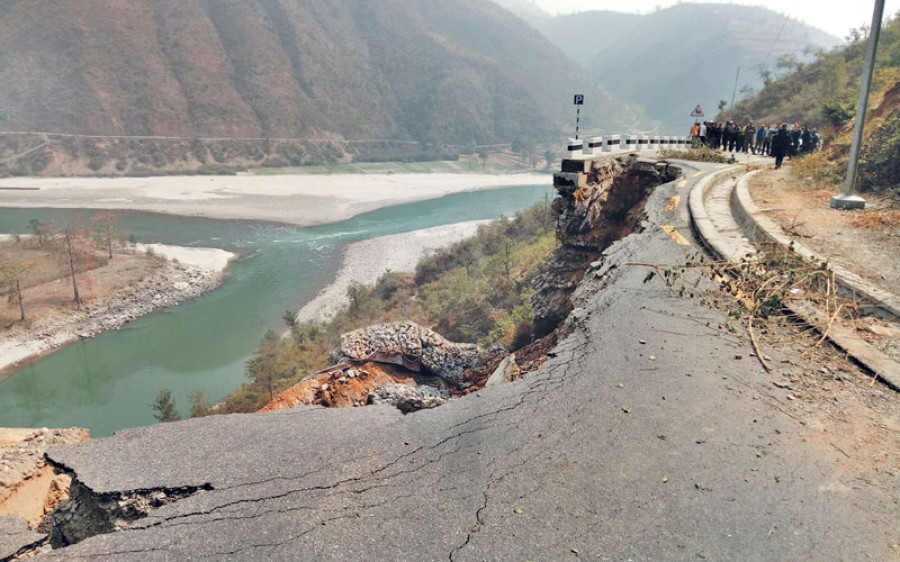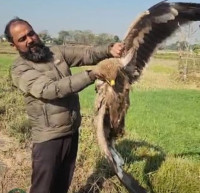National
BP Highway obstructed as 37m section crumbles
Severe damage has been inflicted to the BP Highway after a section of the narrow road collapsed at Trivenighat above the Sunkoshi river.
Raj Kumar Karki, Sanjeev Giri & Tika Bhatta
Severe damage has been inflicted to the BP Highway after a section of the narrow road collapsed at Trivenighat above the Sunkoshi river.
Traffic came to a complete halt following the incident on Sunday night. According to the police unit at Khurkot, soil erosion is increasing, devouring much of the 37-metre stretch in the evening from the initial 25 metres. According to Superintendent of Police Uma Shankar Panjiyar, the incident occurred at 11pm on Sunday night.
A number of anomalies including poor traffic management and inadequate measures post-2015 earthquake in the difficult terrain are blamed for the destruction. Officials say a number of issues and a weak coordination among the government agencies took their toll on the road, bringing traffic along the Khurkot-Nepalthok section to a standstill.
The highway inaugurated by the late prime minister Sushil Koirala in July 2015 was constructed with a Japanese grant of Rs21.5 billion. The fact that the roadway collapsed in a short span of time has raised eyebrows.
The Department of Transport Management says it allows 14 seater vehicles with a maximum weight of 10 tonnes to ply the road. Larger vehicles and heavier trucks were in regular operation on the single lane highway (with double lane bypass in some places).
“Our preliminary study shows that the local administration, traffic police and the Road Department did not have proper surveillance to bar heavy vehicles from the road,” Tok Raj Pandey, spokesperson for the Transport Department, told the Post. “This may not be the sole reason behind the incident but is surely one of the major causes.”
Pandey said trucks carrying loads from the nearby crusher industries had severely impacted the highway. Asked how such vehicles could ply when the government banned vehicles heavier than 10 tonnes, Pandey said they would take one-time permits from the local transport offices including the ones in Bardibas and Lahan.
Moreover, reduction in travel time to Kathmandu from eastern Tarai by around five hours has increased traffic on the highway significantly.
The Department of Roads, however, blames the earthquakes and soil erosion for the damage. DoR Spokesperson Daya Kant Jha refuted arguments that heavy load is the major cause. “A detailed study will be held and a report published. Much cannot be speculated at the moment,” said Jha, adding that the road would come into operation via a diversion from Tuesday.
Government officials, officials from the Japan International Cooperation Agency and consultant Nippon Koei visited the site on Monday. Bharat Kaji Deuju, project chief for Bardibas, Sindhuli and Banepa, said after inspecting the site that a Jica team had concluded a month ago that the road was in danger.
Bindu Shamser Rana, who looks after roads for Jica, has pledged to repair the road urgently. The DoR has said it could take at least three months to repair the section.




 17.12°C Kathmandu
17.12°C Kathmandu
.jpg)















